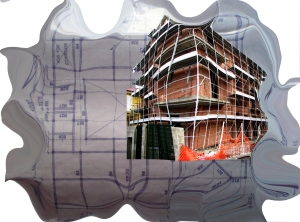
setting out ....from drawing's to reality
The first step in building setting out is to identify a base line according to the site layout plan. We can establish the base line considering the permanent structures and the relevant distances to structural parts from them as given in the drawings.
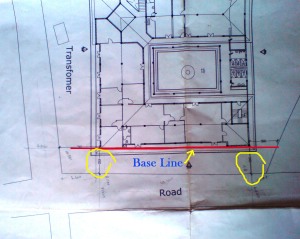
Step 1: Obtaining of a Base Line
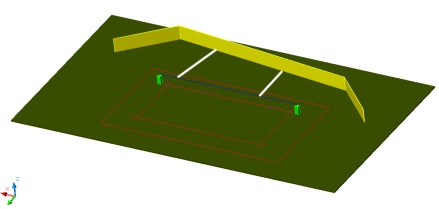
Step 1: Obtaining of a Base Line
Setting out is done based on the principle of “Whole to part”. According to this principle the largest possible rectangle of the building is found and set up first. Then it is further divided into small parts completing the major setting out for the building.
It is very important that setting out process is done in a horizontal plane. When the ground profile is not horizontal proper care must be paid to establish the setting out profiles in a one level. For simple applications a tube filled with water can be used to obtain the levels.
Main instruments involved in this process are Theodolite, Steel and Linen Tapes, Arrows, Wooden pegs, Wire nails and Nylon threads.
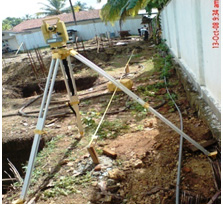
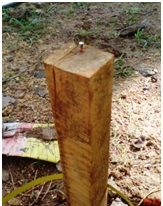
Theodolite and Wooden Pegs used for Setting Out
After establishing the base line, the main rectangle is set up using the pegs and theodolite. Arrows are used as temporary pegs and wooden pegs are driven for permanent pegs .90° angle is taken by the theodolite and Pythagoras rule is also commonly used for the process. When using the Pythagoras rule proper care must be paid to obtain the largest possible combination of triangles for higher accuracy. Steel tape must be used to measure long distances and it must be tightly stretched when taking the readings.
Wooden pegs atop by a wire nail are driven to establish the grid lines of the building. These pegs are driven at places such that they won’t be disturbed by field work etc. Usually they are driven with a distance of 1.5 meter from the grid line.
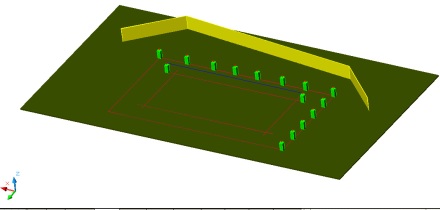
The diagonals of the main rectangle are checked to determine its accuracy. Accurately set up main rectangle is then subdivided to obtain the consisting gridlines. These are obtained by the using structural drawings, Theodolite and steel tape. Nylon threads are stretched between the pegs to obtain the gridlines when necessary.
Usually apart from the pegs depicting the main grid lines, pegs which show the 500mm off sets are also established during the setting out process to facilitate the construction that follows.

I really appreciate.please can i get a practical example ?
I really appreciate the way you explain but need more explanation
Realy appreciate but need the process using 1234 method
can incorrect setting out of buildings be rectified during the actual construction process?
yes… to some extent it is possible .. if the fault is of small oder it is possible to cover it up during the finishes .. But in the case where the main grid lines has an offset exceeding 8 inches .. then that is trouble.. yet there is also a possibility to cover it up as well during construction …it depends on the situation..
I have recently graduated and in need much of the practical experience! my interest is moch on the sloping ground! how to effectively set the building of a considerably bigger size on such places. I dont know anything about the total station though i have seen it used by chinese and was programmed chinese!
thank u!
It luv it but i need the other steps
need notes on building construction
I jst graduated, nd am having interview in d nxt few days bt ve no much experience on constructn of building cos i did my IT in Road constructn. Wat re d likely questn on setting out nd generally on d constructn of buiding. I gained alot here.
Hey waruna… Mama Kassa.. I was searching about building setting out. I found your blog.
Thank you
ela ela.. but i don’t think this is useful for a guy like you at all.. BTW thanks for dropping by buddy..
i do appreciate that can i get a practical examples, this is my email oscaransah@yahoo.com send to it
i really appreciate what you have done and please can i get more practical examples
Thank bro but, i need to know the process of setting out using “builders square”.
This explanation is ok but I need more explanation on building line
Thanks 4 ur article, but wil sugest u often put measurement range where necesary. Keep d gud work on.
I want you to explain on how to use Builder Square method for setting out.
i really appreciating the way you explain thank for all .
comment by Abdisa yilma june28,2012@8;45AM
how long does it take to learn how to use a theodolite
It’s not that difficult.You can master it within few days !!